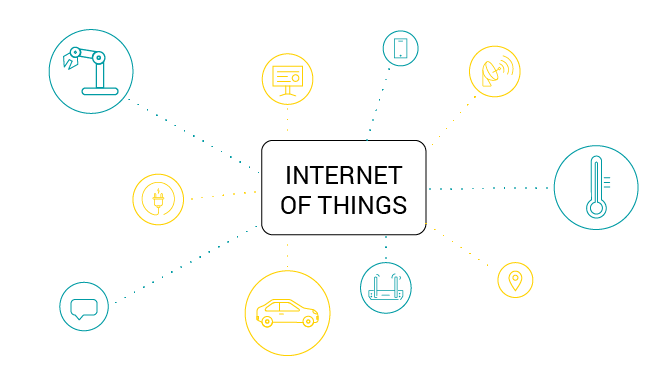IoT Is Not About Radios; it’s All about Data
Table of Contents
The early dare for the Internet of Things (IoT) was how to offer physical connectivity of small and frequently remote devices to the Internet. This matter has fundamentally been solved with the plethora of wireless connectivity resolutions. The actual task for IoT is data association, sharing and search on an unparalleled scale. Most negotiations about IoT frequently point out in passing that today’s machine data is focused in vertical, or isolated, data silos. Though, they hardly clarify why this is a difficult. More vital, they do not give a roadmap of how to resolve this difficultly going onward.
So, what is the big problem with data silos?
Let’s analyze the data silo matter with a practical example based on the transport organization. It possibly will come as a surprise to you, nevertheless you have really been living in quite a few pre-IoT silos for most of your life. This is most obvious in how our transport businesses work around the globe.
Also on Network World:6 tips for working with IoT and big data
The transport business is obviously the business that fabricates and deals with the streets and rails that we as a whole ride as a major aspect of our day by day business. What is not all that undeniable is the huge measure of data and correspondences innovation (ICT) that supports and backings the working of this whole foundation. This comes as tremendous organizations of “things, for example, Bluetooth movement stream sensors, stopping sensors, Automatic Number Plate Recognition (ANPR) cameras and CCTV frameworks, to give some examples.
These “things” create great amount of data. The difficulty with this data is that the only place it drives is back to a expertise and control system to be used for significant, nevertheless very partial, purposes. Now complex this with the truth that transport systems in any country are classically self-sufficiently managed under regional transport establishments.
“We have a clear path for solving the IoT data silo issue by extending the current web services approach from the internet”
In this framework the difficulty is clear. The data produced is infinitely underutilized and is closed to the outside sphere, stifling additional improvement. More than that, as each regional specialist does things just a little bit inversely, they are unable to simply share data amongst themselves never mind another vertical organization.
OneM2M and other web services exist to break down silos
The worthy news is that we have a strong path for determining the IoT data silo problem by increasing the current web services tactic from the internet.
Web services, of course, remark to using uniform rules such as HTTP to attach amongst computers on the internet to do a valuable service. For example, in a business-to-business banking appeal, a computer from one bank may automatically transfer assets to another bank at the end of each association day to settle all outstanding dealings.
As stated earlier, web services require a standardized communication protocol, such as HTTP. They also require a standardized data format, such as XML, to exchange data. The final critical component is easy-to-use application programmer boundaries (APIs) so that programmers can simply raise the web services from inside their software.
Now let’s put on the web services model to IoT and see how it can assist break down the IoT data silo isolation difficult. Luckily, we already have an advanced solution accessible over the oneM2M international standards body that we can use as an sample.
OneM2M is a web benefit based engineering particularly intended to make an even administration layer that can traverse diverse business spaces, for example, transportation, utilities, and social insurance. Hence it is focused to separating the IoT vertical data silo issue. It does this by utilizing conventions, for example, HTTP and the more up to date Constrained Application Protocol (CoAP) convention for communication. It likewise characterizes itemized data structures, semantics and APIs so that outsider application projects can easily utilize oneM2M gauges to trade IoT data between various administration suppliers.
Do we still require search engines?
You may now be thinking about whether regardless we require web search tools according to my early on supposition in the event that we have level arrangements like oneM2M to sort out and trade information between applications. The answer is a vast yes. We will in any case require web search tools. This is basically in light of the fact that the data issue in the IoT is unfathomably enormous. This test dwarves the data administration challenge that was the World Wide Web.
The guide to the IoT will be characterized by dynamic data associations and arrangements, not all trendy at a similar pace or needs. In any case, it will never cover all IoT organizations.
Pretty much as, today there is no single B2B arrangement that fulfills all organizations. I expect that close by oneM2M there will be other institutionalized and restrictive web benefit based IoT results, and this will be entirely solid.
The end game of the IoT will not be a removal of silos. Slightly, it will be a alliance of them to a controllable level. It is at this point where we will want our next-generation search engines to make intellect of it.




